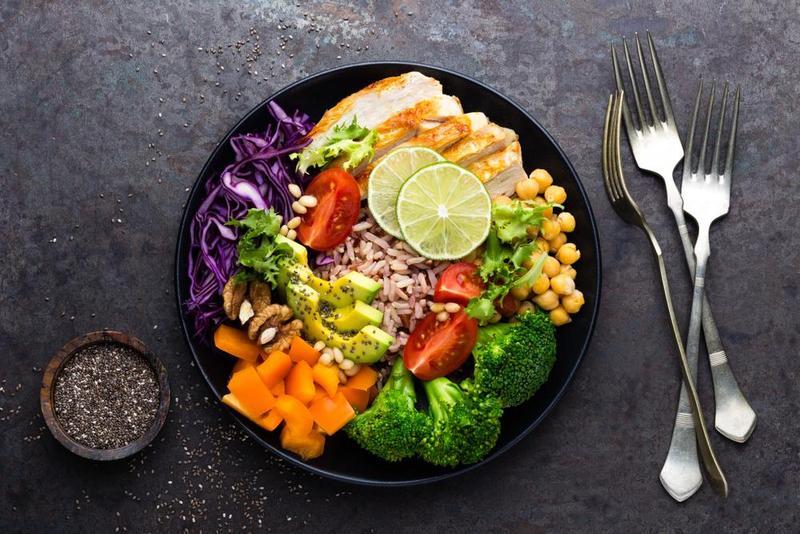NUTRITION AS INTENSIVE CARE INSTRUMENT
NUTRITION AS INTENSIVE CARE INSTRUMENT
Critically ill patients typically have anorexia and are frequently unable to eat food the normal way. Luckily, there are ways to deliver micronutrients and macronutrients to the patient with enteral or parenteral nutrition.
When the body does not get enough nutrients, the metabolism is working against it. It can cause inflammatory and endocrine stress responses that may induce increases in resting energy expenditure (REE) and high nitrogen levels in urine. Nutritional intake may be insufficient and lead to accumulated energy and protein deficits. This can result in a reduction of lean body mass (LBM) to an extent of 1 kg per day. Both low levels of LBM, severe skeletal muscle wasting, and ICU-acquired weakness are associated with a prolonged need for mechanical ventilation and increased mortality rates.
Anorexia is likely a coping strategy as animal and human studies have shown nutritional effects of enteral nutrients on gut flora and improved outcomes.
Nutritional support for adult ICU patients aims at reducing energy and protein deficits without inducing overfeeding, sufficient micronutrient intake, and preserving gut integrity.
Refeeding Syndrome
Refeeding syndrome refers to biochemical and clinical symptoms, as well as metabolic abnormalities due to shifts in electrolytes and fluid imbalance in malnourished patients undergoing refeeding by oral, enteral, and/or parenteral feeding.
It is characterized by low concentrations of predominantly intracellular ions; phosphate, magnesium, and potassium, in addition to abnormalities in glucose metabolism, sodium levels, and water balance associated with morbidity and mortality.
Thiamine deficiency can also occur.
The incidence of refeeding syndrome is unknown due to the lack of a universal definition. Plasma electrolytes and glucose should be measured before feeding and any deficiencies corrected during feeding. Whenever marked hypophosphatemia occurs after the start of feeding, intake should be reduced to 500 kcal per day for 48 hours.
Enteral Nutrition
Tube feeding or enteral nutrition (EN) is administered as a special liquid food mixture containing proteins, carbohydrates, fats, vitamins, and minerals, through a tube into the stomach or small bowel. Different kinds of tubes can be used, such as:
Feeding Tubes
Nasogastric or naso-enteral tubes are placed into the stomach or bowel through the nose. To prevent sinusitis, there are tubes that are placed through the mouth. A tube directly placed through the skin into the stomach or bowel is called a gastrostomy.
Nasogastric silicone tubes may be used for 6 weeks to 3 months.
Blenderized Tube Feeds
Low-cost blenderized tube feeds (“home brew”) are used in some parts of the world. Macronutrient content is usually highly variable, often conflicting with daily recommendations. Moreover, there is a high contamination risk and high concentration and thickness, potentially enhancing intolerance.
Commercially Available Tube Feeds
Tube feeds are available as a canned powder to dissolve, liquid-containing glass bottles, or self-collapsible packages. Closed feeding systems involve the use of sterile feeding containers that are spiked with feeding sets.
Compositions of Tube Feeding
Feeding formulas are very nutritious. The main formula components include:
- Water
- Energy
- Carbohydrate (Glucose)
- Sodium, Chloride
- Protein
- Fat
- Potassium
Nutrient concentrations vary from 1.0-2.0 kcal/mL. Calorically dense formulas are used in patients requiring fluid restriction. High-protein formulas have a higher protein to nonprotein energy ratios and help in achieving protein requirements in obese patients while preventing energy overfeeding.
Fibers
There are feeds with and without fibers. Sources of fiber in EN include soluble and insoluble fibers. Soluble fibers (e.g., pectin and guar) are fermented by colonic bacteria and enhance colonic sodium and water absorption to treat EN-associated diarrhea. Insoluble fibers (e.g., soy polysaccharides) increase peristalsis. Frequently, mixtures of fibers are used.
Allergies
The majority of adverse reactions to food have nothing to do with the immune system in origin, with lactose intolerance being the most common. Documented food allergies in adults are likely lower than 8%-10%, and most enteral feeds are gluten-free. For specific allergies, there are soy-free, casein-free, whey-free, and egg-free feeds available.
Specific Micronutrients
Recommended daily allowances for vitamins and micronutrients in critical illness are unknown; however, supplementation should consist of less than 1500 kcal/day. Moreover, prebiotics and probiotics seem to be safe in most ICU patients, but proven benefits in targeting gut microbiota with these strategies are lacking.
Be the first to post a message!
